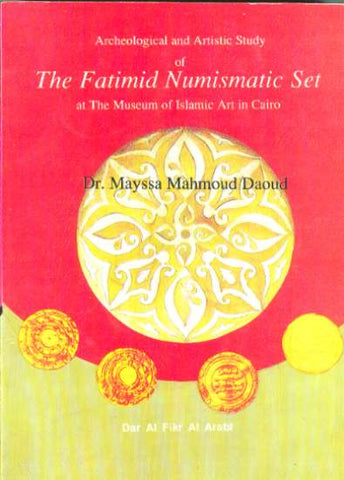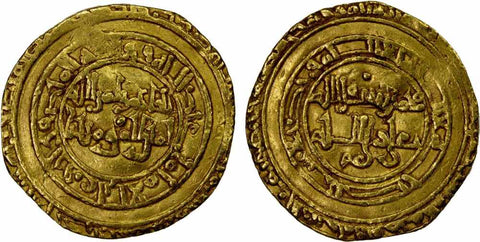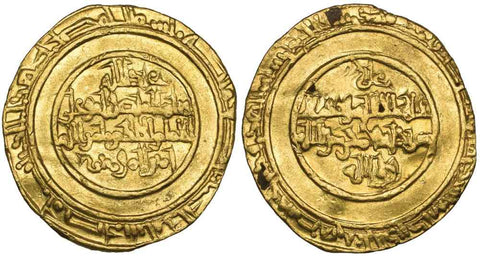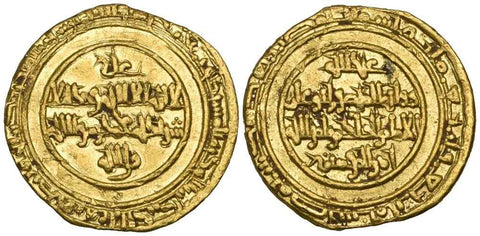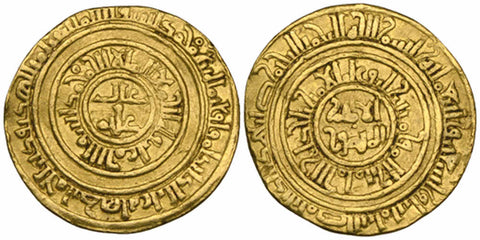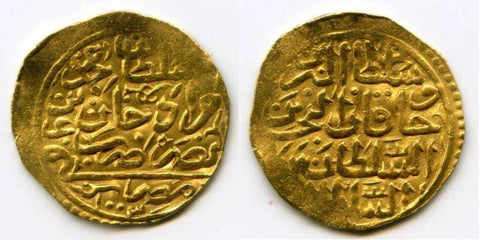
Cairo Egypt Gold Coin Ottoman Sultani 1003-1012 AH Mehmed or Muhammad III
Description: Gold Sultani struck in Egypt during the reign of Muhammad III (or Mehmed III) who ascended the throne in 1595 AD (1003 AH). The coin was struck in the period 1595 - 1603 AD (1003-1012 AH). The coin shows the date clearly as 1003 AH, which is Muhammed's accession date to the throne. Ottoman coins at that time used such a date for most coins struck during a sultan's reign and did not have the actual year of striking indicated. It also clearly shows the mint as Misr current day Fustat on the outskirt of Cairo the current capital of Egypt. The obverse of the coin reads "Sultan Muhammad bin Murad Khan Ezat Nasruh Duriba Fee Misr Sanat 1003", while the reverse reads "Sultan al Barrain wa Khaqan al Bahrain; al-Sultan ibn al-Sultan." Please carefully review the scan as it is part and parcel of our description.
Date: Marked 1003 AH or 1595 AD.
Mint: Misr current day Fustat on the outskirts of Cairo, Egypt.
Size and Weight: This is a sultani, weighs 3.4 grams and is about 20.5 mm in diameter.
References: It is KM #6.
Condition: I would grade this coin as very fine or much better with a well centered and bold strike. The calligraphy is very readable and is all there. The coin does have area of flatness or strike weakness which can be seen in the scan. Additionally the coins has a slightly wavy flan. This is a quality coin and would make a great addition to your collection. Please see photo to judge the grade and to appreciate the quality as well as the condition of this beautiful coin.
Historic Perspective: Unlike prior Islamic coins struck in Egypt, Ottoman coins do not have long praying sentences. They contain the name of the Sultan and his father's, name of the mint, the accession date for the Sultan, and a short wishful sentence such as "khullide mulkehu (may his rule be permanent)" or "azzet nasrehu (may his glory be holy)".
The Ottoman Empire existed from 699 AH (1300 AD) till 1341AH (1924 AD). In the beginning, the Ottoman state struck only silver coins known as Akce until the reign of Muhammad II (Mehmet the conqueror). On May 29, 1453, Mehmet II conquered Constantinople, the capital city of the Byzantine Empire. He made it the capital of the Ottoman State and called in Konstantiniye or Qustantinya (current day Istanbul). In 1478 he began striking Gold coins known as Sultani (also known as Dinar, Ashrafi, Funduk, or Altin). He based it on the Venetian ducat standard of 3.5 gram of high purity gold (over 21K).
Egypt was conquered by Selim I in 1517 AD (921 AH) and the mamluk rule was ended. Selim I, began striking coins in Cairo and used the mint name "MISR" on the coins. Although the Ottoman were the official rulers of Egypt the mamluks still wheeled quite a bit of power until Mohammad Ali massacred the last of them at the Cairo Citadel in the early 1800's. The obverse of the coin reads "Al Sultan Suleyman, Ibn Selim Khan, azzet nasrehu, Duriba Fee Misr Sanat 926 (literally translated as The Sultan Suleyman son of sultan Selim khan, may his glory be holy, struck in Egypt in the year 926)." Please carefully view photos as they are part and parcel of our description.
The Ottoman empire reached the height of its power under Sulayman I the Magnificent, with territory extending across north Africa and through the Balkans into Hungary. Coins were struck in more than forty mints spread throughout the empire. Sulayman was distinguished for his justice and tolerance. His military, educational, and legal reforms earned him the name Sulayman the Lawgiver (al-Kanuni) among Muslims. He was fond of pomp and splendor and was a lavish patron of the arts and of literature.
Mehmed III remains notorious even in Ottoman history for having nineteen of his brothers and half brothers executed to secure power. Mehmed III was an idle ruler, leaving government to his mother. The major event of his reign was the Austro-Ottoman War in Hungary (1593–1606).

